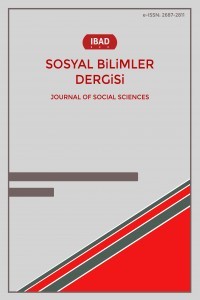Kamusal Pedagoji Olarak Transit
Örgün eğitim kurumlarının ötesinde gerçekleşen eğitim fenomenlerini tanımlamak için araştırmacılar tarafından özellikle son otuz yıldır yaygın bir biçimde “Kamusal Pedagoji” (Public Pedagogy) kavramı kullanılmaktadır. Buna bağlı olarak bu araştırmada, kamusal pedagojinin kuramsal temelini tanıtarak onun bir ortamı olarak transiti kavramsallaştırma sürecini inceledim. Araştırmada sanat temelli araştırma yöntemini kullanmış olup, araştırmanın verilerini doküman incelemesi ile yapılandırdım. Araştırmada öncelikle kamusal alan kavramını genel bir çerçeveden inceleyerek ardından okul dışında bu alanlarda meydana gelen eğitimi modelleyen kamusal pedagojiye yer verdim. Daha sonra buna örnek olarak kendi öğrenme yollarımı, bu öğrenmelerin süreçlerini ve ortamlarını somutlaştırdığım diğer bir deyişle kamusal pedagojinin bir ortamı olarak transiti kavramsallaştırdığım iki çalışmayı gözden geçirdim. Örnek olarak seçtiğim bu araştırmaların incelenmesi neticesinde, transitin kamusal pedagojinin içinde önemli bir öğrenme ortamı oluşturduğu sonucuna ulaştım. Son olarak transitin bilgi iletme potansiyeli göz önüne alınarak daha etkili bir öğrenme ortamı haline getirilebileceği önerisine yer verdim.
Transit as Public Pedagogy
The term "Public Pedagogy" has been widely used by researchers especially for the last thirty years in order to describe phenomena that occur beyond the formal education institutions. Accordingly, in this research, I introduced the theoretical basis of public pedagogy and examined its conceptualization process of transit as its medium. In this study art-based research method were used and the data of the research were structured by document analysis. In the study, I examined the concept of the public sphere from a general perspective at first and then included the public pedagogy, which models the education that takes place outside of school. Then I reviewed two studies in which I concretized my own learning paths, processes and environments of these learning, in other words, conceptualized the transit as an environment of public pedagogy as examples of the public pedagogy. As a result of examining these studies that I selected as examples, I came to the conclusion that the transit creates an important learning environment within the public pedagogy. Finally, I gave the suggestion that the transit can be transformed into a more effective learning environment, taking into account its potential to convey information.
___
- Barone, T. & Eisner, E. W. (2006). Arts-based educational research. J. L. Given, G. Camilli & S. B. Elmore (Ed.), Handbook of complementary methods in educational research içinde (s. 95-109). New York: Routledge.
- Burdick, J., & Sandlin, J. A. (2010). Educational inquiry and the pedagogical other: On the politics and ethics of researching critical public pedagogies. J. A.
- Giroux, H. A. (2004c). Public pedagogy and the politics of neo-liberalism: Making the political more pedagogical. Policy Futures in Education, 2(3-4), 494–503.
- Grace, A. P. (2001). Using queer cultural studies to transgress adult educational space. V. Sheared & P. A. Sissel (Ed.), Making Space: Merging Theory and Practice in Adult Education içinde (s. 257-70). Westport, CT: Bergin & Garvey.
